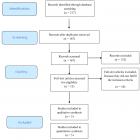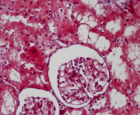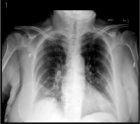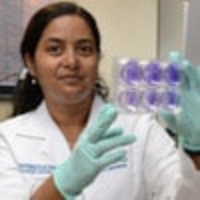Abstract
Research Article
Potential of Pleurotus sajor-caju compost for controlling Meloidogyne incognita and improve nutritional status of tomato plants
Sherin FA Awd Allah*, Doaa M Mostafa and Eman FA Awad-Allah
Published: 30 December, 2019 | Volume 3 - Issue 3 | Pages: 118-127
The potential of spent compost of oyster mushroom, Pleurotus sajor-caju cultivated on rice (MCR) or wheat straws (MCW) was evaluated against the root-knot nematode, Meloidogyne incognita on tomato plants under field conditions during two successive seasons (2016 and 2017). The field trial was carried out in a clay loam soil naturally infested with M. incognita at a private farm, Kafr El-Sheikh governorate, Egypt. Results revealed that all the tested treatments greatly suppressed final populations (Pf), numbers of galls and egg masses of M. incognita during both seasons as compared to the untreated treatment. The highest percentages of Pf reductions (81.1 - 87%) and (80.2 - 86.2%) were achieved with the chemical nematicide, Vydate® 10 G and treatments of (MCR and MCW) at application rate of 1200 g/m2 in the 1st and 2nd seasons, respectively. Moreover, the fruit yield during both seasons was increased significantly with all the applied treatments, especially treatment of MCW at application rate of 1200 g/m2. Additionally, chemical fruit properties were markedly improved with MCR and MCW treatments. Also, treatments of MCR and MCW achieved the highest percentages of nitrogen and phosphorus contents. Generally, the results indicated that spent compost obtained after cultivation of P. sajor-caju has a nematicidal potential against M. incognita, also improved nutritional status and increased tomato yield.
Read Full Article HTML DOI: 10.29328/journal.jpsp.1001042 Cite this Article Read Full Article PDF
Keywords:
Agricultural residues; Biocontrol; Fruit quality; Organic amendments; Oyster mushroom; Root-knot nematode
References
- Abd El-Ghany NM. Molecular evaluation of Bacillus thuringiensis isolates from the soil and production of transgenic tomato plants harboring Bt gene for controlling lepidopterous insects in Egypt. Dissertation. Ain Shams University Egypt. 2011; 270.
- Gerster H. The potential role of lycopene for human health. J Am Coll Nutr. 1997; 16: 109-126. PubMed: https://www.ncbi.nlm.nih.gov/pubmed/9100211
- Taber HG. Petiole sap nitrate sufficiency values for fresh market production. J Plant Nutr. 2001; 24: 945-959.
- Khedr ZMA, Fathy El- SL, Abd-Rahman AMM. Salt tolerance in tomato (i): Growth and dry matter accumulation. Proc. of the 6th Arabian Conference for Horticulture, Ismailia, Egypt. 2005; 75–83.
- Atkinson HJ, Lilley CJ, Urwin PE. Strategies for transgenic nematode control in developed and developing world crops. Curr Opin Biotechnol. 2012; 23: 251-256. PubMed: https://www.ncbi.nlm.nih.gov/pubmed/21996368
- Sharma IP, Sharma AK. Effects of initial inoculums levels of Meloidogyne incognita J2 on development and growth of Tomato cv. PT-3 under control conditions. African Journal of Microbiology Research. 2015; 9: 1376-1380.
- d’Errico G, Giacometti R, Roversi Pf, Prasad L, Woo SL. Root knot disease caused by Meloidogyne incognita (Kofoid & White, 1919) Chitwood, 1949 (Nematoda, Meloidogynidae) on tomato grown in soil-less culture in Italy. Redia. 2016; 99: 25–28.
- Ibrahim IKA, Mokbel AA, Handoo ZA. Current status of phytoparasitic nematodes and their host plants in Egypt. Nematropica. 2010; 40: 239–262.
- Trudgill DL, Block VC. Apomictic, polyphagous root-knot nematodes: exceptionally successful and damaging biotrophic root pathogens. Annu Rev Phytopathol. 2001; 39: 53–77. PubMed: https://www.ncbi.nlm.nih.gov/pubmed/11701859
- Abrol D. Integrated pest management: Current concepts and ecological perspective. 1st Edition, Academic Press, USA. 2013.
- Landi S, D'Errico G, Roversi Pf, d'Errico FP. Management of the root-knot nematode Meloidogyne incognita on tomato with different combinations of nematicides and a resistant rootstock: Preliminary data. J Zoology. 2018; 101: 47–52.
- d’Errico G, Marra R, Crescenzi A, Davino SW, Fanigliulo A, et al. Integrated management strategies of Meloidogyne incognita and Pseudopyrenochaeta lycopersici on tomato using a Bacillus firmus-based product and two synthetic nematicides in two consecutive crop cycles in greenhouse. Crop Protection. 2019; 122: 159-164.
- Litterick AM, Harrier L, Wallace P, Watson CA, Wood M. The role of uncomposted materials, composts, manures, and compost extracts in reducing pest and disease incidence and severity in sustainable temperate agricultural and horticultural crop production–a review. Critical Reviews in Plant Sciences. 2004; 23: 453–479.
- Collange B, Navarrete B, Peyre G, Mateill T, Tchamitchain M. Root-knot nematode (Meloidogyne) management in vegetable crop production: The challenge of an agronomic system analysis. Crop Protection. 2011; 30: 1251–1262.
- Chindo PS, Bello LY, Kumar N. Utilization of organic wastes for the management of phyto-parasitic nematodes in developing economies. In: S. Kumar (editor). Management of organic waste. InTech. 2012; 198.
- Zhang Y, Ghaly AE, Li B. Physical properties of rice residues as affected by variety and climatic and cultivation conditions in three continents. American Journal of Applied Sciences. 2012; 9: 1757–1768.
- Hassan MA, Chindo PS, Marley PS, Alegbejo MD. Management of root-knot nematodes (Meloidogyne spp.) on tomato (Lycopersicon lycopersicon) using organic wastes in Zaria, Nigeria. Plant Protect Sci. 2010; 46: 34–38.
- Youssef MMA, Lashein AMS. Effect of cabbage (Brassica oleracea) leaf residue as a biofumigant, on root knot nematode, Meloidogyne incognita infecting tomato. Journal of Plant Protection Research. 2013; 53: 271–274.
- El-Sherbiny AA, Awd-Allah SFA. Management of the root-knot nematode, Meloidogyne incognita on tomato plants by pre-planting soil biofumigation with harvesting residues of some winter crops and waste residues of oyster mushroom cultivation under field conditions. Egyptian Journal of Agronematology. 2014; 13: 189–202.
- Rinker DL. Spent Mushroom Substrate Uses. In: Zied, D.C., Pardo-Giménez, A. (eds): Edible and medicinal mushrooms: technology and applications. Wiley, Hoboken. 2017; 427–454.
- Kurt S, Buyukalaca S. Yield Performances changes in enzyme activities of Pleurotus spp. (P. ostreatus and P. sajor-caju) cultivated on different agricultural wastes. Bioresour Technol. 2010; 101: 3164–3169. PubMed: https://www.ncbi.nlm.nih.gov/pubmed/20056410
- Zhang R, Li X, Fadel JG. Oyster mushroom cultivation with rice and wheat straw. Bioresour Technol. 2002; 82: 277–284. PubMed: https://www.ncbi.nlm.nih.gov/pubmed/11991077
- Pokhrel CP, Kalyan N, Budathoki U, Yadav RKP. Cultivation of Pleurotus sajor-caju using different agricultural residues. Int J Agricultural Policy and Research. 2013; 2: 19–23.
- Aslam S, Saifullah. Organic management of root knot nematodes in tomato with spent mushroom compost. Sarhad Journal of Agriculture. 2013; 29: 63–69.
- Chitwood DJ. Phytochemical based strategies for nematode control. Annu Rev Phytopathol. 2002; 40: 221–249. PubMed: https://www.ncbi.nlm.nih.gov/pubmed/12147760
- Abbasi N, Torkashvan AM, Rahanandeh H. Evaluation of mushroom compost for the bio control root-knot nematode. Int J Biosciences. 2014; 5: 147–153.
- Prasad R, Power JF. Soil fertility management for sustainable agriculture. Boca Raton, Florida, CRC Press. 1997.
- Mishra B. Fertilizer Technology and Management. I. K. International Publishing House Pvt. Ltd., New Delhi., India. 2012.
- Tolanur S. Soil Fertility, Fertilizers and Integrated Nutrient Management. 1st ed. International Book Distributing Co., Lucknow, U. P., India. 2006.
- Agrios GN. Plant Pathology. 5th ed. London: Elsevier Academic Press. 2005; 922.
- Ferraz S, Freitas LG, Lopes EA, Dias-Arieira CR. Manejo sustentável de fitonematoides. Viçosa: Editora UFV. 2010; 306.
- Santana-Gomes SM, Dias-Arieira CR, Roldi M, Dadazio TS, Marini PM, et al. Mineral nutrition in the control of nematodes. Afr J Agric Res. 2013; 8: 2413–2420.
- Barker KR. Sampling nematode communities. In: K. R. Barker, C. C. Carter, and J. N. Sasser, Eds. An advanced treatise on Meloidogyne, Vol. II, Methodology. USAID, North Carolina State University Graphics, Raleigh, NC, USA. 1985b; 3–17.
- Oostenbrink M. Major characteristics of the relation between nematodes and plants. Mededelingen van de Landbouwhogeschool, Wageningen. 1966; 46.
- Mulla MS, Norland LR, Fanara DM, Darwazeh HA, McKean DW. Control of Chironomid midges in recreational lakes. J Economic Entomology. 1971; 64: 300–307.
- Yousri SS. Effects of planting date and phosphorus fertilization on growth, yield and quality of peas (Pisum sativum). M.Sc. Thesis. Faculty of Agric Alex Univ. Egypt. 1990.
- O.A.C. Official Methods of Analysis. Association of Official Analytical Chemists. 16th Ed., AOAC International, Washington, DC, USA. 1995; 490–510.
- Jones JB, Jr. Laboratory Guide for Conducting Soil Tests and Plant Analysis. CRC Press, Boca Raton, FL. 2001.
- Page AL, Miller RH, Keeney DR. Methods of soil analysis. Part 2: chemical and microbiological properties, 2nd ed. Agron. No. 9 (Part 2) in the Agronomy Series. ASA, SSSA, Inc., Madison, WI, USA. 1982.
- Chapman HD, Pratt PF. Methods of analysis for soils, plants and waters. University of California, Los Angeles, Division of Agricultural Science. 1961.
- Jackson ML. Soil Chemical Analysis. Prentice-Hall of India Pvt. Ltd., New Delhi. 1967.
- CoStat Microcomputer program analysis, CoHort Software, Version 6.303, Monterey, CA, USA. 2004.
- Saad ASA, Radwan MA, Mesbah HA, Ibrahim HS, Khalil MS. Evaluation of some non-fumigant nematicides and the biocide avermectin for managing Meloidogyne incognita in tomatoes. Pakistan J Nematol. 2017; 35: 85–92.
- Lamovšek J, Urek G, Trdan S. Biological control of root-knot nematodes (Meloidogyne spp.): Microbes against the pests. Acta Agriculturae Slovenica. 2013; 101: 263–275.
- Bhattacharjee R, Dey U. An overview of fungal and bacterial biopesticides to control plant pathogens/diseases. Afr J Microbiol Res. 2014; 8: 1749–1762.
- Hibbett DS, Thorn RG. Nematode‐trapping in Pleurotus tuberregium. Mycologia. 1994; 86: 696–699.
- Sharma VP. Potential of Pleurotus sajor-caju for biocontrol of Aphelenchoides composticola in Agaricus bisporus cultivation. Mush Res. 1994; 3: 15–20.
- Thorn RG, Moncalvo JM, Reddy CA, Vilgalys R. Phylogenetic analyses and the distribution of nematophagy support a monophyletic pleurotaceae within the polyphyletic pleurotoid-lentinoid fungi. Mycologia. 2000; 92: 241–252.
- Barron GL, Thorn RG. Destruction of nematodes by species of Pleurotus. Can J Bot. 1987; 65: 774–778.
- Kwok OCH, Plattner R, Weisleder D, Wicklow, DT. A nematicidal toxin from Pleurotus ostreatus NRRL 3526. Journal of Chemical Ecology. 1992; 18: 127–136.
- Heydari R, Pourjam E, Goltapeh EM. Antagonistic effect of some species of Pleurotus on the root-knot nematode, Meloidogyne javanica in vitro. Plant Pathol J. 2006; 5: 173–177.
- Palizi P, Goltapeh EM, Pourjam E, Safaie N. The relationship of oyster mushrooms fatty acid profile and their nematicidal activity. 5th National Biotechnology Congress of Iran. 2007; 762.
- D'Addabbo T, Papajova I, Sasanelli N, Radicci V, Renčo M. Suppression of root-knot nematodes in potting mixes amended with different composted biowastes. Helminthologia. 2011; 48: 278–287.
- Khattak S, Khattak B. Management of root-knot nematode with Trichoderma harzianum and spent mushroom compost. Proceedings of 46th Croatian and 6th International Symposium on Agriculture. Opatija Croatia. 2011; 157–160.
- Awd-Allah SFA, El-Sherbiny AA. Non-chemical control of Heterodera golden and Meloidogyne incognitaon rice plants using residues of Oyster mushroom cultivation and supernatant of Bacillus thuringiensis before transplanting under field microplot conditions. Egypt. J Agronematol. 2015; 14: 62–77.
- Palizi P, Goltapeh EM, Pourjam E, Safaie N. Potential of oyster mushrooms for the biocontrol of sugar beet nematode (Heterodera schachtii). Journal of Plant Protection Research. 2009; 49: 27–33.
- Ching S, Wang KH. Mushroom compost to battle against nematode pests on vegetable crops. HānaiʻAi Newsletter. August, 2014.
- Pant H, Singh MK. Management of root-knot nematode, Meloidogyne incognita through biocontrol agents and organic matter in tomato (Lycopersicon esculentum). J Env Bio-Sci. 2016; 30: 353–354.
- Bradley S. Vegetable gardening: growing and harvesting vegetables. Murdoch Books.
- Owaid MN, Abed IA, Al-Saeedi SSS. Applicable properties of the bio-fertilizer spent mushroom substrate in organic systems as a byproduct from the cultivation of Pleurotus spp. Information Processing in Agriculture. 2017; 4: 78–82.
- Perez-Piqueres A, Edel-Hermann V, Alabouvette C, Steinberg C. Response of soil microbial communities to compost amendments. Soil Biology and Biochemistry. 2006; 38: 460–470.
- Oka Y. Mechanisms of nematode suppression by organic soil amendments- A review. Applied Soil Ecology. 2010; 44: 101–115.
- Akhtar M, Malik A. Roles of organic soil amendments and soil organisms in the biological control of plant-parasitic nematodes: a review. Bioresource Technology. 2000; 74: 35–47.
- McSorley R. Overview of organic amendments for management of plant-parasitic nematodes, with case studies from Florida. J Nematol. 2011; 43: 69-81. PubMed: https://www.ncbi.nlm.nih.gov/pubmed/22791915
- El-Saedy MAM, Awd-Allah SFA, Hammad SE. Efficacy of rice straw and spent oyster mushroom substrates as organic soil amendments in controlling citrus nematode on Valencia orange trees. Egyptian Journal of Agronematology. 2017; 16: 143–165.
- Zhu HJ, Liu JH, Sun LF, Hu ZF, Qiao JJ. Combined alkali and acid pretreatment of spent mushroom substrate for reducing sugar and biofertilizer production. Bioresour Technol. 2013; 136: 257–266. PubMed: https://www.ncbi.nlm.nih.gov/pubmed/23567689
- Ünal M. The utilization of spent mushroom compost applied at different rates in tomato (Lycopersicon esculentum Mill.) seedling production. Emir J Food Agric. 2015; 27: 692–697.
- Collela CF, Costa LMAS, Moraes TSJ, Zied DC, Rinker DL, et al. Potential utilization of spent Agaricus bisporus mushroom substrate for seedling production and organic fertilizer in tomato cultivation. Ciênc agrotec. 2019; 43: 1–7.
- Havlin JL, Beaton JD, Tisdale SL, Nelson WL. Soil fertility and fertilizers: an introduction to nutrient management. 6th ed. Prentice Hall, Upper Saddle River, NJ. 1999.
- Davari K, Neamati H, Ghahreman B, Sayari N, Shahin-Rokhsar P. Effect of irrigation period and culture media on yield and some growth parameters of lettuce in soilless culture. Water and Soil Issue Agricultural Sciences and Industries. 2009; 23: 48–54.
- Sagar MP, Ahlawat OP, Raj D, Vijay B, Indurani C. Indigenous technical knowledge about the use of spent mushroom substrate. Indian Journal of Traditional Knowledge. 2009; 8: 242–248.
- El-Hadi OA, Camelia YE. The conditioning effect of composts (natural) or/and acryl amide hydrogels (synthesized) on a sandy calcareous soil. Growth response, nutrients uptake and water and fertilizers use efficiency by tomato plants. Journal of Applied Science Research. 2004; 2: 1293–1297.
- Lopez Castro RI, Delmastro S, Curvetto NR. Spent oyster mushroom substrate in a mix with organic soil for plant pot cultivation. Micologia Aplicada International. 2008; 20: 17–26.
- Joshi R, Pal Vig A. Effect of vermicompost on growth, yield and quality of tomato (Lycopersicum esculentum L.). African Journal of Basic & Applied Sciences. 2010; 2: 117–123.
- Pavla B, Pokluda R. Influence of Alternative Organic Fertilizers on the Antioxidant Capacity in Head Cabbage and Cucumber. Notulae Botanicae Horti Agrobotanici Cluj-Napoca. 2008; 36: 63–67.
- Khadem SA, Galavi M, Ramordi M, Mousavi SR, Rousta MJ, et al. Effect of animal manure and superabsorbent polymer on corn leaf relative water content, cell membrane stability and leaf chlorophyll content under dry condition. Australian Journal of Crop Science. 2010; 4: 642–647.
- Sainju UM, Dris R, Singh B. Mineral nutrition of tomato. Food Agric Environ. 2003; 1: 176–184.
- Ankerman D, Large R. Agronomy Handbook: Soil and Plant Analysis. A & L Agricultural Laboratories, Modesto, CA. 2001.
- McGeehan SL. Impact of waste materials and organic amendments on soil properties and vegetative performance. Appl Environ Soil Sci. 2012; 2012: 1–11.
- Eden M, Gerke HH, Houot S. Organic waste recycling in agriculture and related effects on soil water retention and plant available water: a review. Agron Sustain Dev. 2017; 37: 11.
- Guo M, Chorover J. Solute release from weathering of spent mushroom substrate under controlled conditions. Compost Science & Utilization. 2004; 12: 225–234.
Similar Articles
-
Isolation and biochemical characterization of Plant Growth Promoting (PGP) bacteria colonizing the rhizosphere of Tef crop during the seedling stageZerihun Tsegaye*,Birhanu Gizaw,Genene Tefera,Adey Feleke,Solomon Chaniyalew,Tesfaye Alemu,Fasil Assefa . Isolation and biochemical characterization of Plant Growth Promoting (PGP) bacteria colonizing the rhizosphere of Tef crop during the seedling stage. . 2019 doi: 10.29328/journal.jpsp.1001027; 3: 013-027
-
Non-chemical control of Armillaria mellea infection of Prunus persicaJim Downer*,Ben Faber. Non-chemical control of Armillaria mellea infection of Prunus persica. . 2019 doi: 10.29328/journal.jpsp.1001031; 3: 050-055
-
Potential of Pleurotus sajor-caju compost for controlling Meloidogyne incognita and improve nutritional status of tomato plantsSherin FA Awd Allah*,Doaa M Mostafa,Eman FA Awad-Allah. Potential of Pleurotus sajor-caju compost for controlling Meloidogyne incognita and improve nutritional status of tomato plants. . 2019 doi: 10.29328/journal.jpsp.1001042; 3: 118-127
-
Alternative method for the transformation of Capsicum speciesZoltan Toth*,Mate Toth,Zoltan Szabo. Alternative method for the transformation of Capsicum species. . 2021 doi: 10.29328/journal.jpsp.1001053; 5: 001-003
-
Intensive fruit orchards cultivationWaleed Fouad Abobatta*. Intensive fruit orchards cultivation. . 2021 doi: 10.29328/journal.jpsp.1001064; 5: 072-075
Recently Viewed
-
Overview on liquid chromatography and its greener chemistry applicationAdel E Ibrahim,Magda Elhenawee,Hanaa Saleh,Mahmoud M Sebaiy*. Overview on liquid chromatography and its greener chemistry application. Ann Adv Chem. 2021: doi: 10.29328/journal.aac.1001023; 5: 004-012
-
COPD and low plasma vitamin D levels: Correlation or causality?Luca Gallelli*, Erika Cione,Stefania Zampogna, Gino Scalone. COPD and low plasma vitamin D levels: Correlation or causality? . J Pulmonol Respir Res. 2018: doi: 10.29328/journal.jprr.1001008; 2: 011-012
-
Environmental Factors Affecting the Concentration of DNA in Blood and Saliva Stains: A ReviewDivya Khorwal*, GK Mathur, Umema Ahmed, SS Daga. Environmental Factors Affecting the Concentration of DNA in Blood and Saliva Stains: A Review. J Forensic Sci Res. 2024: doi: 10.29328/journal.jfsr.1001057; 8: 009-015
-
Markov Chains of Molecular Processes of Biochemical MaterialsOrchidea Maria Lecian*. Markov Chains of Molecular Processes of Biochemical Materials. Int J Phys Res Appl. 2024: doi: 10.29328/journal.ijpra.1001076; 7: 001-005
-
Generation of Curved Spacetime in Quantum FieldSarfraj Khan*. Generation of Curved Spacetime in Quantum Field. Int J Phys Res Appl. 2024: doi: 10.29328/journal.ijpra.1001077; 7: 006-009
Most Viewed
-
Evaluation of Biostimulants Based on Recovered Protein Hydrolysates from Animal By-products as Plant Growth EnhancersH Pérez-Aguilar*, M Lacruz-Asaro, F Arán-Ais. Evaluation of Biostimulants Based on Recovered Protein Hydrolysates from Animal By-products as Plant Growth Enhancers. J Plant Sci Phytopathol. 2023 doi: 10.29328/journal.jpsp.1001104; 7: 042-047
-
Sinonasal Myxoma Extending into the Orbit in a 4-Year Old: A Case PresentationJulian A Purrinos*, Ramzi Younis. Sinonasal Myxoma Extending into the Orbit in a 4-Year Old: A Case Presentation. Arch Case Rep. 2024 doi: 10.29328/journal.acr.1001099; 8: 075-077
-
Feasibility study of magnetic sensing for detecting single-neuron action potentialsDenis Tonini,Kai Wu,Renata Saha,Jian-Ping Wang*. Feasibility study of magnetic sensing for detecting single-neuron action potentials. Ann Biomed Sci Eng. 2022 doi: 10.29328/journal.abse.1001018; 6: 019-029
-
Pediatric Dysgerminoma: Unveiling a Rare Ovarian TumorFaten Limaiem*, Khalil Saffar, Ahmed Halouani. Pediatric Dysgerminoma: Unveiling a Rare Ovarian Tumor. Arch Case Rep. 2024 doi: 10.29328/journal.acr.1001087; 8: 010-013
-
Physical activity can change the physiological and psychological circumstances during COVID-19 pandemic: A narrative reviewKhashayar Maroufi*. Physical activity can change the physiological and psychological circumstances during COVID-19 pandemic: A narrative review. J Sports Med Ther. 2021 doi: 10.29328/journal.jsmt.1001051; 6: 001-007

HSPI: We're glad you're here. Please click "create a new Query" if you are a new visitor to our website and need further information from us.
If you are already a member of our network and need to keep track of any developments regarding a question you have already submitted, click "take me to my Query."
















































































































































